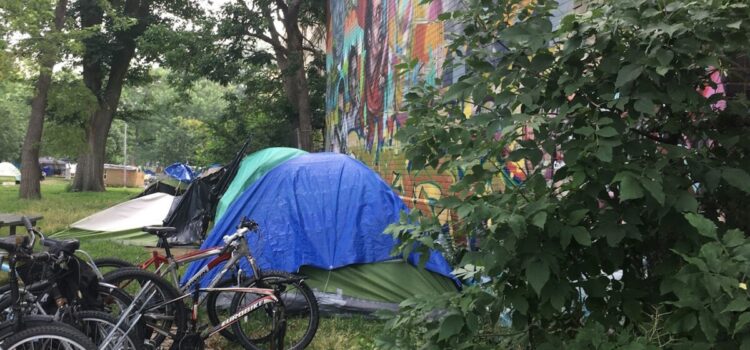

Toronto’s shelter shortage calls for government action
NewsPoliticsTorontoToronto Mar 1, 2022 Veronica David

TORONTO – Ongoing shortages in Toronto’s homeless shelters calls for government action as more unhoused individuals struggle to find shelter out of the cold weather.
Shelters have reached maximum capacity almost every night this year.
Extreme cold weather alerts, blazing snowstorms and freezing temperatures characterize Toronto’s coldest month of the year. Data from Environment Canada revealed that the city experienced an average high of -2.2 degrees Celsius and an average low of -11.3 degrees Celsius.
https://public.tableau.com/app/profile/veronica.d8428
January 15 was reported to be the coldest day of the month with a low of -20.4 degrees Celsius. On this day, the average occupancy rate across Toronto’s bed-based and room-based homeless shelters reached 94 per cent and 97 per cent, respectively,
https://public.tableau.com/app/profile/veronica.d8428/viz/HomelessOccupancyRates/Dashboard1
City of Toronto data reveals that there are 9,410 individuals actively experiencing homelessness including 741 newly identified unhoused individuals. To date, there are only 7,800 shelter spaces across shelters, hotels, respite centres and warming centres, leaving a difference of approximately 1,600 unhoused individuals without shelter options.
https://public.tableau.com/app/profile/veronica.d8428/viz/ActiveHomelessness/Sheet1
Outreach workers like Lorraine Lam from Sanctuary Toronto shared on Twitter her experience with the the City’s Central Intake Line, a phone number that connects those experiencing homelessness with an available shelter space last month.
The forecast is calling for -18C tonight, feeling like -25C. It has been impossible to get anyone indoors, but today, something new: Central Intake doesn't have the capacity to even pick up the phone.
Listen here (1:15 mark is the punch): https://t.co/XAKGyK8dGO via @YouTube
— Lorraine Lam (@lorrainelamchop) January 10, 2022
Doug Johnson Hatlem, a street pastor at Sanctuary Toronto, is another outreach worker who helps unhoused individuals find shelter from the cold. “It was never my personal thing to call Central Intake,” says Hatlem. “It’s so useless.” Instead, Hatlem finds “backdoor ways” to get those in desperate circumstances into the very few available shelter spaces during the winter.
Hatlem also discusses the ways that Sanctuary has kept up with the increase of newly identified unhoused individuals this past month.
“We did a lot more street level outreach, doing things like handing out sleeping bags and tents, and hand warmers. We’ve certainly increased our outreach in January to try and meet that need,” says Hatlem. ”I think we tried to have a number of responses to meet the direct physical needs that stem out of that to keep people warm and alive.”
City data reports that there have been a total of 14 deaths in homeless shelters across the city. The City has not yet confirmed the total number of deaths among unhoused individuals or the total number of deaths related to cold-exposure.
City councillor Kristyn Wong-Tam discusses how the shelter system has been long overwhelmed by the increase of homelessness in the city, especially from other municipalities with no established shelter system for the homeless.
“Toronto has become the ‘dumping ground’ for municipalities and areas surrounding Toronto,” says Wong-Tam. “It’s a crisis. And instead, we’re opening up shelter hotels; instead, we’re putting people onto cots and we’re taking over community centres. It could be dealt with differently. “
Wong-Tam discusses how adding spaces to the already existing shelters is not the solution. “Is the city going to be able to sustain the shelter system without looking at the cause of homelessness, adequate mental health and addiction support, residential eviction moratoriums and the provision of supportive housing, which needs mental health wraparound support?” asks Wong-Tam. “No, because the shelter [system] will collapse.”
The solution to homelessness is not by providing additional shelter spaces and temporary fixes. For Wong-Tam, the solution is for the government to acknowledge homelessness as a humanitarian crises while providing sufficient funding and resources similar to what Canadian citizens received throughout the pandemic.
“When we got together to fight COVID, it demonstrated the ingenuity, the power of Canada and its citizens when we wanted to do something. We can address the homeless crisis because we just took on a global pandemic,” says Wong-Tam. “We can’t do it if we’re not united and we don’t treat it as an emergency with dedicated resources and persistence. We can’t beat it unless we work together.”






